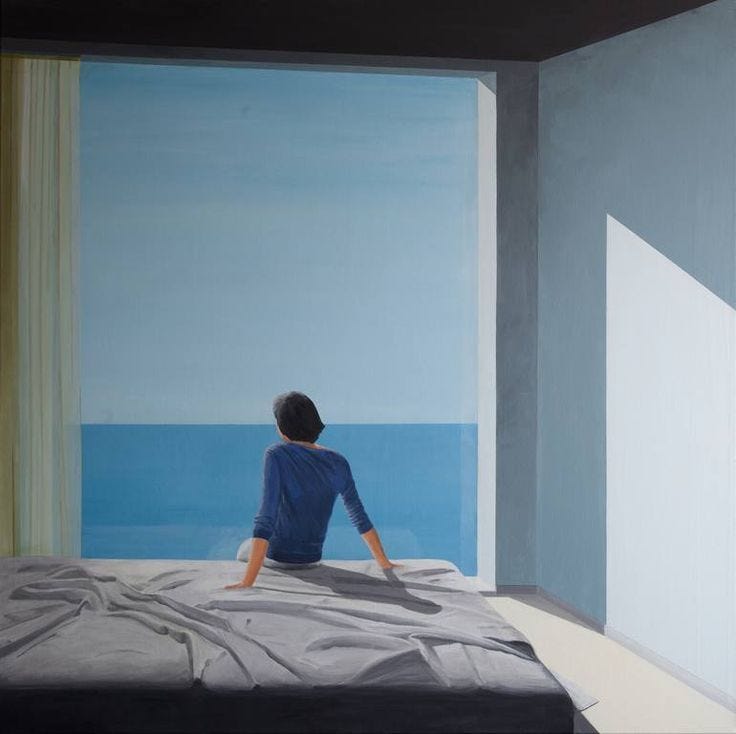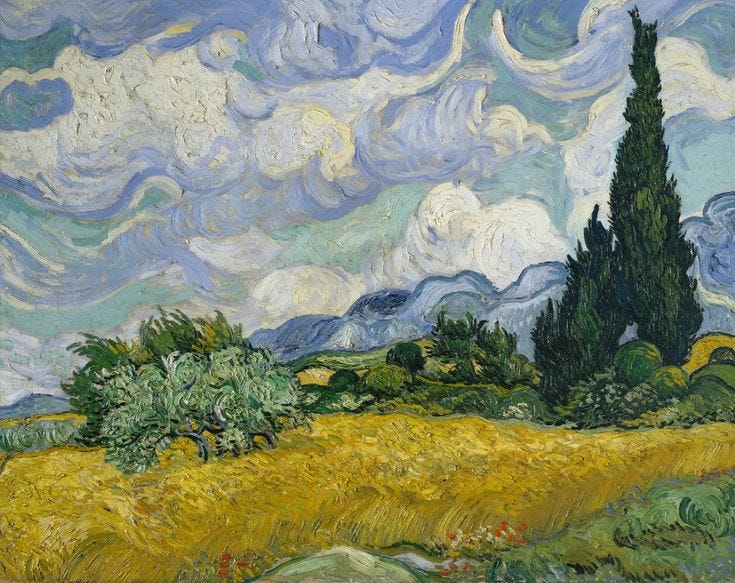Welcome to today’s edition of That’s A Good Idea. If this is your first time reading, subscribe here.
One quick thing:
If there is a recent essay or edition that has sparked your curiosity, given you a new idea, or in any way contributed positively to your daily life please consider supporting That’s A Good Idea with a $5 monthly subscription. I want, more than anything for TAGI to remain something you look forward to reading each week and your support helps me to gauge if I am on the right track. While I don’t write to make money, any small contribution is greatly appreciated. Additionally, if there is a specific topic, idea, or book you’ve read recently that you’d recommend I dig into, let me know in the comments below!
Spartan Artistry
The pursuit of solitude, space, and a life of material simplicity is crucial to the creative process.
Creation cannot occur in the noise. Distractions must be stripped away to hear the voice; the voice that is drowned out by the cacophony of modern life.
An appropriate example of the archetype of the ascetic artist is 20th-century French sculptor Alberto Giacometti. Giacometti embraced a life of remarkable simplicity and eschewed the trappings of wealth for the sake of his art. In a century marked by rapid change and excess, his lifestyle and artistry were defined by his deliberate austerity, a choice that mirrored the reductive nature of his sculptures; figures stretching the limits of recognition, speaking to the world between the material and the ephemeral.
Giacometti's approach to life and work was not unique. It is the foundation for the true artist’s mind. In asceticism, there exists a path to greater clarity and creativity. “The more material means, the more confusion,” Giacometti once remarked. This sentiment echoes through the spaces he inhabited, particularly his cluttered studio, where the chaos of creation was a reflection not of disorder but of a singular focus on the act.
Many artists have sought the clarity that comes with a Spartan existence. Thoreau retreated to Walden Pond, Van Gogh roamed the countryside in Arles like an apparition. Both men found the essential life the most revealing of beauty and energy. Van Gogh found it in the quiet quality of the light in the countryside of Arles. Thoreau found it in the solace of his thoughts that came from his long walks and meditations in the woods.
The Path Less Taken
The rationale behind closing oneself off from the rest of the world for the sake of creation has both philosophical and practical considerations. The act of creation is, at its core, an introspective journey. It requires isolation and vulnerability. It requires an open path to the often unheard, or ignored, voice in the back of one’s head. Solitude in this way is not loud and lonely but a grand silence. It is where the intuitive, exploring mind, can find the space to move and create without the shackles of the rational or material world. It is the world in its true form, away from the stories, beliefs, and images we project onto it. Away from the noise.
This pure, distilled essence of a thing is necessary for the artist to understand what it is they are creating. Giacometti said, “Artistically, I prefer a piece of chalk and a wall to all the tools in the world.” The artist understands the belief in the primacy of basic elements over the complexity of tools and materials, just as they understand the primacy of solitary creation over the babble of opinion and modern considerations of style. This philosophy of reduction, of stripping away to arrive at the core, is not born of necessity but of choice. It mirrors a deliberate turning away from the distractions of success and acclaim; these other pointless things which muddy the truth.
The pursuit of a pared-down existence is not merely a personal preference but a philosophical stance, a belief in the power of less to reveal more. In Giacometti’s words: “Reality is not to be found in the exterior appearance but in the soul of things.” His sculptures, devoid of unnecessary detail, force the observer to look beyond the surface, to engage with the intangible power and feeling of the piece.
In his rejection of the material, Giacometti aligned himself with a tradition of thought that values the spiritual and the essential above the physical and the transient. His life, like his art, was a reflection of a belief in the sufficiency of the minimal, the idea that from the sparest of means can emerge the richest of insights. With an understanding of the necessary elements of creation, wealth and fame changed nothing about Giacometti’s lifestyle or dedication to his solitude.
The Calling Quiet
Today's artists must navigate a world where such stepping back is increasingly difficult. The digital world, with its omnipresent demands on our attention, creates a barrier to the kind of deep work and isolation that art requires. The challenge, then, is to carve out a space within this world that allows for the kind of sustained attention and solitude that breeds creativity. This may mean a physical withdrawal to places where the digital connection is weak (or cell service is nonexistent), where the natural world can assert itself again and remind us of a pace of life more conducive to the creative process.
It also means a deliberate choice to disconnect, to turn off the devices that bind us to the useless and endless flow of information. To treat oneself as an addict, unable to break the habit alone. A modern form of asceticism — less aesthetically intense, but perhaps more painful — choosing presence over absence, of real silence over noise. If we’re wondering where the best contemporary artists are, we’re not going to find them yammering online about the divisive political issue of the day. They’ve made a choice that echoes the decisions of artists past, who sought the clarity of simplicity over the complexity of abundance.
We face a world vastly different from those of their predecessors, yet the fundamental need remains unchanged: the need for solitude, for space, for a simplicity that allows the voice of creativity to emerge in strength and clarity.
In embracing this solitude, in seeking out this space, the artist engages in a rebellion, a refusal to be swept away by the digital tide. This is the contemporary artist's struggle, a fight for the right to silence in a world that never stops speaking. It is a struggle that requires both courage and conviction, for in the silence that it seeks to preserve lies the possibility of true creation, the birth of art that speaks not just to the moment but to the ages.
As always, thanks for reading
-Joe









